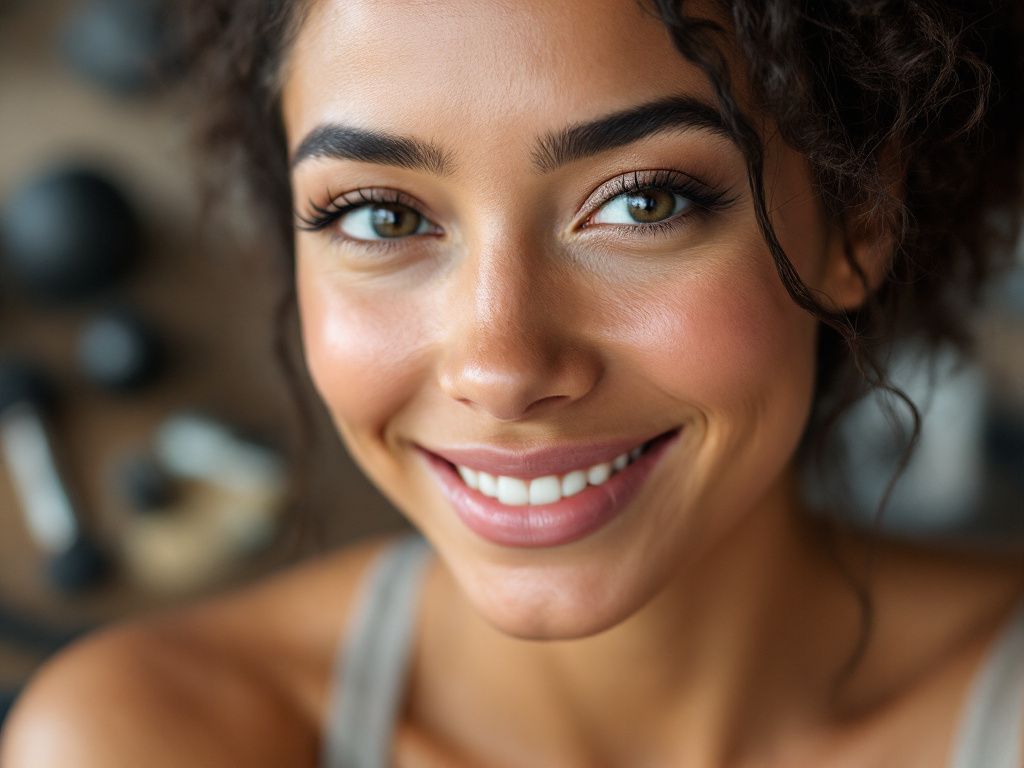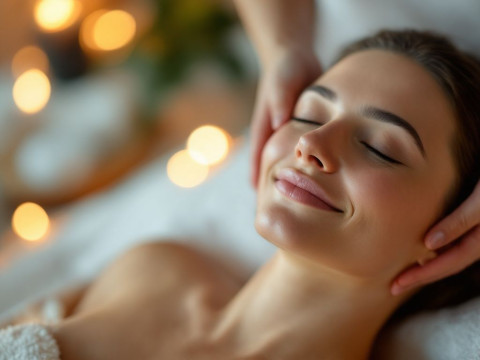If you’ve ever spent countless hours sweating it up in the gym, helping clients achieve their fitness goals, and then looked in the mirror only to be met with dreaded work acne, you’re definitely not alone. As a personal trainer, your gym environment is your office, your playground, but unfortunately, it can also be a breeding ground for pesky skin troubles.
It’s tough, right? You’re there promoting health and fitness, yet battling breakouts that dim your confidence. So, what’s the deal with work acne, and how can you combat it while still maximizing your time in the gym?
Let’s dig into this skin saga and find some solutions that you, a busy personal trainer, can easily implement. Trust me, this isn’t just another skincare sermon—let’s chat and break it down into real, functional steps to keep those skin irritations at bay.
Understanding Work Acne
What Is Work Acne, Anyway?
Work acne is not just run-of-the-mill acne. It’s an exacerbated form of acne triggered by specific factors present in your work environment—in this case, the gym. We’re talking about sweat, friction, and even sometimes the wrong kind of clothing. Feels like a catch-22, doesn’t it? You clock in each day ready to push clients to their max, but this environment’s toll on your skin can be significant.
Why the Gym Environment Impacts Your Skin
The gym environment has its own unique challenges. Heat and humidity levels climb, heavy sweating is all part of the gig, and the intensity of workouts means your skin is practically a sponge for oils, bacteria, and all sorts of grime. Add in friction from clothing and gear, and you’ve got a perfect recipe for work acne. Let’s touch on these factors a bit more:
Sweat and Oil
When you’re in trainer mode, sweat’s just part of the package. But when sweat mingles with natural skin oils, dirt, and bacteria, it forms a trifecta of ickiness. This can clog pores and spark breakouts faster than you can run a 5K.

Friction and Pressure
Think: headbands, helmet straps, and even synthetic gym shirts. Continuous rubbing can lead to friction acne—a common sight for those frequently dashing from one client to another. Every awkward fitting piece of gear can be an irritant just waiting to upset your skin.
Gym Gear and Equipment
The gym’s a giver, no doubt, but let’s not forget all that shared gear. Maybe you remember to wipe those machines, but is everyone else as diligent? Equipment can house bacteria that happily hop from dumbbells to your face. Lovely, right?
Strategies for Dealing With Work Acne
Now, handling work acne is not a one-off game changer. It’s about adopting and consistently practicing habits that work for your lifestyle and skin. Sound daunting? It really doesn’t have to be.
Building Your Skin Care Routine
Consistency is key. You need a skincare routine that’s practical and fits seamlessly into your day, because let’s be real, you haven’t got time for some ten-step nightly regimen.
Cleansing Post-Workout
Always, and I mean always, cleanse after your training sessions. A gentle, non-comedogenic cleanser works great for eliminating oils and impurities without stripping away vital moisture. Make it as routine as refilling your water bottle.
Exfoliation: Friend, not Foe
Exfoliating helps, but keep it in check. Once or twice a week with a light scrub or a chemical exfoliant is enough. Overdoing it can actually invite more irritation.
Moisturizer and Sun Protection

Opt for lightweight, oil-free moisturizers that won’t clog pores, and pop on some SPF even if you’re indoors most of the day. Gym lighting can do weird things to skin, and protection is better than damage control anytime.
Dress Smart: The Right Workout Gear
Believe it or not, your choice of clothing significantly impacts your skin. Choose breathable materials that wick away sweat rather than trapping it. Clothing should allow skin to breathe and minimize friction.
Headgear with Caution
If you wear helmets or hats in activities, consider ones with built-in wicking layer or pads. Keep them clean. And maybe have a few backups so you can rotate and reduce potential fallout from built-up grime.
Gym Etiquette for Better Skin
Ah, gym life—a breeding ground for germs. A few common sense habits can safeguard your skin.
- Towel It Off: Always carry a clean towel with you. It’s your shield against gym equipment grime. Pat, don’t rub, sweat off your face to minimize irritating its surface.
- Wipe Down Equipment: Yes, you know this. Make it part of your session briefing. Sanitize beforehand as an extra measure against acne-causing bacteria.
- Hands Off Your Face: Well, this one speaks for itself. The fewer times hands touch your face, the better.
Diet and Hydration: More Important Than You Think
Balancing Your Diet
Diet plays a notable role in the state of your skin. Incorporate more fruits, vegetables, and omega-3-rich foods to help control systemic inflammation and promote skin health.

Hydration Is Key
Drink up! Keeping hydrated is crucial, especially in gym settings. Dehydrated skin is unhappy skin prone to breakouts.
Stress Less and Sleep More: Your Unseen Allies
All that stress from working with demanding clients can take a toll on skin too. Make self-care non-negotiable—because a well-rested, less stressed trainer shows up better across the board.
Combatting Work Acne Long-Term
Hopefully, by now, you’re starting to see that managing work acne involves some multi-tasking strategies. Some steps you take might seem basic, but these become the bedrock of a skin-friendly gym routine.
Treatment Products
Serious about getting ahead? Incorporate products with acne-fighting ingredients like salicylic acid or benzoyl peroxide. Over-the-counter options work, but consult a dermatologist if things persist.
When to Seek Professional Help
Yo-yo-ing between clear skin and flare-ups isn’t fun, so don’t hesitate to consult a dermatologist for more targeted treatments. They can tailor a plan specific to your needs which can be a huge relief.
Wrapping It Up
Work acne doesn’t have to own your life or dictate how effectively you crush those gym sessions. It’s about small steps that collectively make skin feel stronger, healthier, and more cared-for. Hopefully, you caught some ideas today. Feel free to adapt these tips into your routine. After all, this is about you gaining some control amidst the sweat storms and heavy lifting, so you can confidently support others in their fitness journey while absolutely flooring it on your own.
Remember, glowing skin and packed classes—a duo that’s well within reach. Let’s get you there.
Frequently Asked Questions
What causes acne?
Acne is caused when hair follicles become blocked with oils, dead skin cells, and bacteria. The sebaceous glands produce sebum, an oily substance, which can be stimulated by hormones such as androgens (including testosterone). This excess sebum, combined with dead skin cells and bacteria like *Cutibacterium acnes*, clogs the hair follicles and leads to inflammation and acne[1][3].
What are the common symptoms of acne?
The symptoms of acne include inflamed, raised bumps (papules), pustules (pimples filled with pus), whiteheads and blackheads (clogged pores), and painful bumps under the skin (cysts or nodules). Acne can also lead to dark spots and scarring. The affected areas may be tender or painful and often appear on the face, neck, shoulders, chest, and upper back[1][5].
What are the risk factors for developing acne?
Risk factors for acne include genetic predisposition, hormonal changes (such as during puberty, pregnancy, or menopause), certain medications (like corticosteroids and anabolic steroids), high glycemic load diets, and stress. Additionally, certain skin care products and endocrine disorders like polycystic ovary syndrome can also contribute to acne[1][3].
How is acne diagnosed?
Acne is typically diagnosed through a medical history and physical exam. Doctors may ask about family history, medications, and skin care products. Blood tests to measure hormone levels may also be conducted in some cases to help determine the cause and severity of the acne[1].
References










